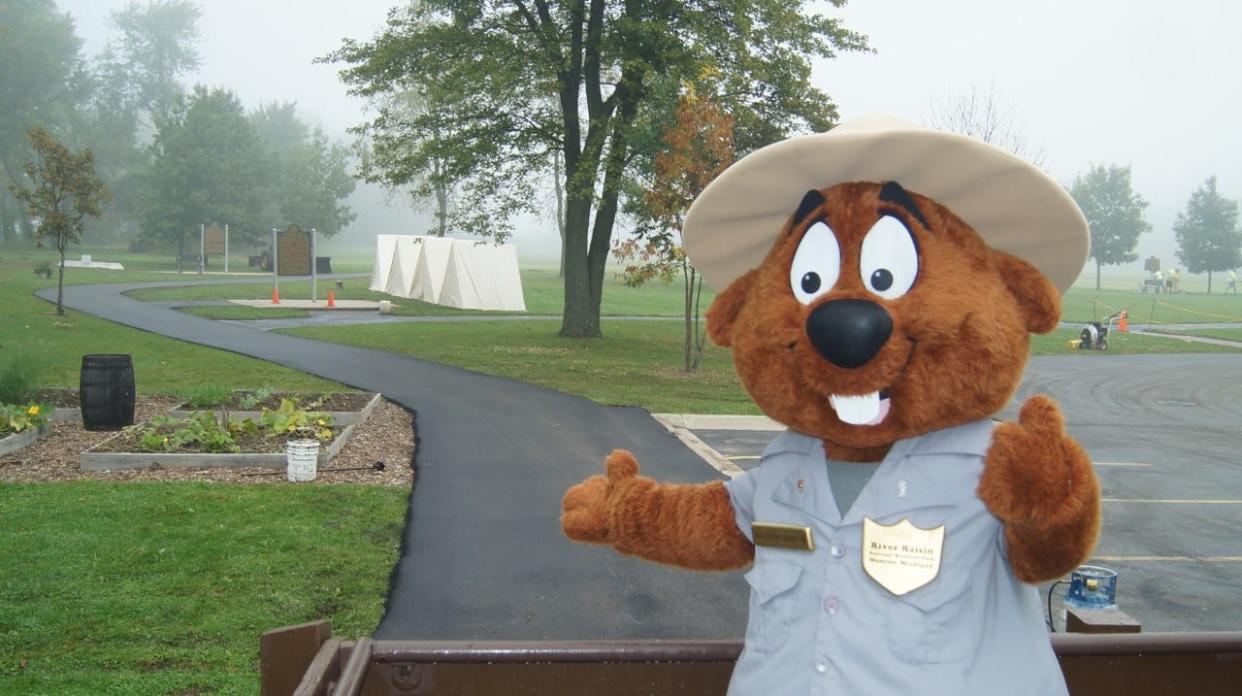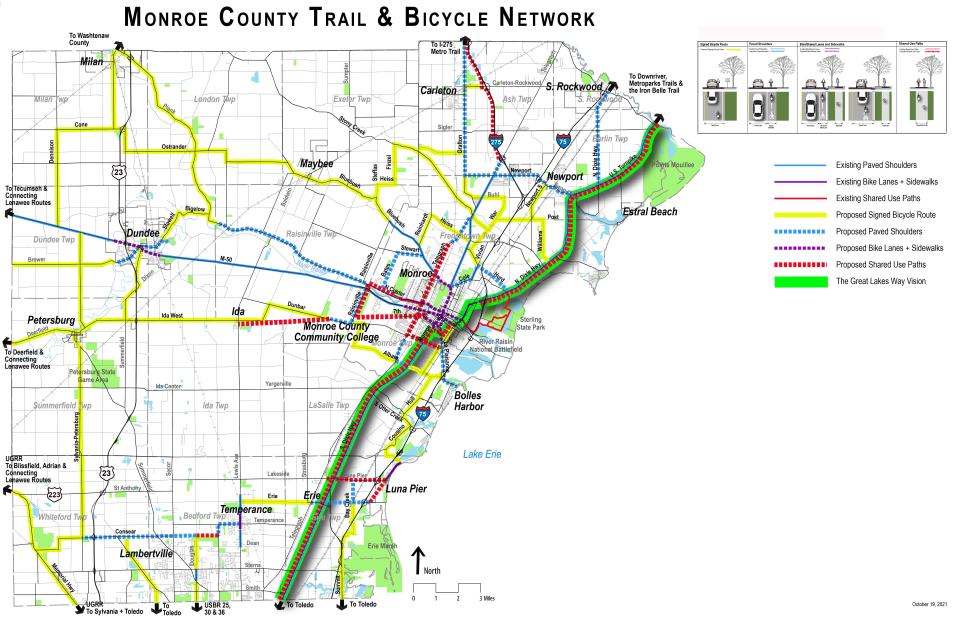The Great Lakes Way / Biking trails could make Monroe a destination



Florence Buchanan says Monroe County has much to offer in popular attractions to connect with both regional and state bicycling and trail plans for Michigan and beyond.
Like the River Raisin National Battlefield Visitor Center, Pointe Mouillee State Game Area, Sterling State Park Park, Monroe County Community College, Heck Park and the N. Custer Rd. pathway. Buchanan, chairperson of the Monroe County Bicycle and Pedestrian Advisory Panel, said the county stands to benefit from the Great Lakes Way, a plan to connect world-class freshwater, wildlife, recreation and heritage trails in Michigan with the county’s own back yard.
“The Great Lakes Way will foster Monroe County becoming more of a destination place for recreation, tourism and economic development in the future,” Buchanan said in an email Monday. “We are very excited about this project and will continue to participate and support the efforts.”
Key regional destinations in Monroe County include city and county parks, historic sites like the Gen. George Armstrong Custer Statue, restaurants, shops, schools, libraries and places of employment.
The purpose of forming her 10-member panel in 2019 was to identify a vision for a safe network of non-motorized trails and bicycle routes linking Monroe County communities like Dundee, Petersburg and Carleton. The vision provides a framework for a countywide trail and bike system and directing bicycle and trail accommodations throughout the county. The panel has already recommended the following improvements in its plan:
Signed bicycle routes.
Paved road shoulders.
Bike lanes, shared lanes and sidewalks.
Shared-use paths.
The county plan focuses on a network of corridors to connect with other regional and local corridors or systems, including the River Raisin Heritage Trail that connects the state park in Frenchtown Township with the City of Monroe and the battlefield park. The plan is based on existing conditions, opportunities and ideas from community stakeholders and residents. The countywide corridors often use county roadways, parks or routes to provide connectivity.
Gaining traction of late is the Great Lakes Way, an interconnected vision of 156 miles of blueways or water trails and 160 miles of greenways stretching from southern Lake Huron south through western Lake Erie. The vision is that “all residents and visitors of Southeast Michigan are connected to and benefit from world-class freshwater, wildlife, recreation and heritage right in our backyard,” said John H. Hartig, chairman of the Great Lakes Way Advisory Committee.
“The Great Lakes Way will knit together local greenways and water trails to create a regional trail of national significance,” he said in an email last week. “The strategy is to connect people to continentally significant water resources right in our backyard and help connect communities together.”
Hartig is no stranger to Monroe County. He served as manager of the Detroit River International Wildlife Refuge for many years before taking a job with the Great Lakes Institute for Environmental Research at the University of Windsor, Ontario. Currently, he is working with Buchanan’s panel and the City of Monroe to connect with points of interest in the county.
Hartig said the Eastern Seaboard has the Appalachian Trail, the Western Seaboard has the Pacific Rim Trail and the Rocky Mountains has the Continental Divide Trail. Soon, partners like the Community Foundation for Southeast Michigan would have a major bicycling and trail plan that would include Monroe County and communities within it.
The Community Foundation has its sights set on a bold new plan to establish a world-class land and water trail running along Michigan's lower eastern coast from Port Huron to Toledo, he said.
“If the foundation has its way, this area will soon have a regional trail of national significance called the Great Lakes Way,” Hartig told Monroe County commissioners in mid-October. “The big thing is you get a national designation for your route. It’s just a vision now, but we want to share it with you.”
He said U.S. Rep. Debbie Dingell, D-Dearborn, is also working with him on the way project. The goal is to make Southeast Michigan the No. 1 freshwater recreation destination in the United States.
Trails like the River Raisin Heritage Trail and the county’s bicycling and trail plan are already drawing “a lot of tourism,” Hartig said. “We want to knit it all together.”
In 2001, the Community Foundation launched its Greenways Initiative. Thus far, $33 million in foundation and private contributions have leveraged another $125 million of matching investments to plan, design, finance and build more than 100 miles of connected greenways across Southeast Michigan.
An emphasis of the Great Lakes Way will be to ensure that all residents and visitors – people of all ages, backgrounds, ethnicities and interests – feel welcomed and share in its benefits, Hartig said.
“The Great Lakes Way will improve close-to-home outdoor recreation, enhance regional competitive advantage, help attract and retain employees for businesses and celebrate, protect and capitalize on our region’s defining natural resources,” he said.
***
More about the Great Lakes Way is available at https://cfsem.org/initiative/greatlakesway.
More information about the Monroe County Trail and Bicycle Plan is available at the county’s website on parks and recreation
(https://www.co.monroe.mi.us/officials_and_departments/departments/parks_and_recreation/index.php). Then scroll down to the bottom of the page and click on Monroe County Trail and Bicycle Plan.
This article originally appeared on The Monroe News: The Great Lakes Way / Biking trails could make Monroe a destination

